Key Takeaways
1. Assess Your Retirement Readiness Realistically
Reaching a secure retirement can feel a little intimidating.
Honest self-assessment. The first step towards a secure retirement is understanding your current financial standing. This involves calculating your monthly expenses, estimating your guaranteed income (Social Security, pensions), and determining the size of your retirement nest egg. Use worksheets to get a clear picture of your income gap, the difference between your expenses and guaranteed income.
Calculate your needs. To estimate how much you'll need, divide your income gap by a savings return factor (3.3% for conservative, 5.0% for aggressive). This provides a rough estimate of your required retirement savings. Compare this to your current savings to identify any shortfall.
Don't panic, plan. Knowing your shortfall allows you to develop a targeted savings strategy. Remember, even if the number seems daunting, you have time to catch up. The key is to take a proactive role in your retirement and place yourself firmly in the driver's seat for the next chapter of your life.
2. Maximize Savings and Minimize Debt
An important part of preparing for your retirement in the next five years is making sure your financial choices are aligned with your goals and values.
Prioritize saving and debt reduction. With retirement looming, focus on two key financial goals: maximizing retirement savings and eliminating consumer debt. Consumer debt, with its high-interest rates, can significantly drain your retirement income. Prioritize paying it off to free up more cash flow.
Strategic allocation. Follow a strategic approach to saving and debt payoff:
- Save up to the employer match in your 401(k) plan.
- Eliminate consumer debt.
- Max out a Roth IRA.
- Max out your employer-sponsored retirement plan(s).
Budgeting is key. Creating a budget is essential for identifying areas where you can cut expenses and increase savings. Track your income and expenses, differentiate between needs and wants, and find creative ways to reduce spending. Even small changes can make a big difference over time.
3. Strategize Retirement Income Withdrawals
The fact that your money will continue to grow in retirement is the reason why determining how much you can afford to withdraw each year is more complicated than simply dividing your nest egg by the number of years you hope to live.
4% Rule vs. Bucket Method. Two primary strategies exist for retirement fund withdrawal: the 4% rule and the bucket method. The 4% rule involves withdrawing 4% of your assets in the first year and adjusting for inflation annually. The bucket method divides your portfolio into separate income "buckets" for short-, medium-, and long-term needs.
Understanding RMDs. Federal regulations mandate required minimum distributions (RMDs) from tax-deferred retirement accounts (like 401(k)s and traditional IRAs) starting at age 72. These RMDs can impact your withdrawal strategy, so factor them into your planning.
Annuities as an option. Annuities offer guaranteed income streams in retirement. While they have drawbacks, such as limited access to principal, they can provide peace of mind for those seeking a hands-off approach to managing retirement income.
4. Find a Trustworthy Financial Advisor
Partnering with a financial professional to prepare for retirement can help relieve your stress about the big decisions ahead of you, but how do you find the right adviser for your needs?
Skills and knowledge first. When seeking a financial advisor, prioritize their skills and knowledge over perceived trustworthiness. Competence is harder to fake than sincerity. Look for advisors with relevant certifications and a proven track record.
Understand compensation models. Different advisors are paid in different ways, which can influence their recommendations. Be aware of commission-based advisors, fee-only advisors, and fee-based advisors. Fee-only advisors, who are paid directly by clients, are often considered the most objective.
Ask the right questions. Interview potential advisors to assess their expertise, investment philosophy, and compensation structure. Ask for sample portfolios and inquire about their ideal client. A good advisor should be transparent, communicative, and aligned with your financial goals.
5. Understand Social Security Benefits
Social Security is in the news a lot, and that can make you worry.
Social Security's role. Social Security is a crucial component of retirement income for many Americans. Understand how the program works, including eligibility requirements, benefit calculations, and claiming strategies.
Timing is key. The age at which you claim Social Security benefits significantly impacts the amount you receive. Delaying benefits until your full retirement age (or even age 70) can result in a substantial increase in your monthly payments.
Spousal and survivor benefits. Be aware of spousal and survivor benefits, which can provide additional income for eligible spouses and surviving family members. These benefits can be particularly important for those with lower earnings or who have lost a spouse.
6. Minimize Taxes on Retirement Income
There is no avoiding the taxman, not even in retirement.
Tax diversification. Develop a tax-efficient retirement income strategy to minimize your tax burden. This involves understanding the tax implications of different income sources, such as Social Security, pensions, retirement accounts, and investments.
Roth accounts. Consider utilizing Roth IRAs or Roth 401(k)s, which offer tax-free withdrawals in retirement. Converting traditional retirement accounts to Roth accounts can also be a tax-saving strategy, although it may trigger a tax liability in the year of conversion.
Asset allocation. Strategically allocate your assets between tax-deferred, tax-free, and taxable accounts to optimize your tax situation. Place high-yield bonds in tax-deferred accounts and stocks in taxable accounts to minimize your overall tax burden.
7. Plan for Healthcare Costs in Retirement
Healthcare is likely to be one of your largest expenses in retirement, even with the help of Medicare.
Estimate healthcare expenses. Healthcare costs can be a significant drain on retirement savings. Estimate your potential healthcare expenses, including Medicare premiums, deductibles, copayments, and long-term care costs.
Medicare and Medigap. Understand your Medicare options, including Parts A, B, C, and D. Consider purchasing Medigap insurance to supplement Original Medicare and cover out-of-pocket costs.
Long-term care planning. Plan for potential long-term care needs, which are not covered by Medicare. Explore long-term care insurance or other strategies to protect your assets from the high cost of long-term care services.
8. Make Informed Housing Decisions
Unlike most of the other issues in this book, the questions raised in this chapter may require you to discuss options with your children or other family members.
Assess your current housing situation. Evaluate your current housing needs and expenses. Consider whether downsizing, relocating, or staying put is the best option for your retirement.
Mortgage considerations. Aim to pay off your mortgage before retirement to reduce your monthly expenses. If you're unable to do so, explore options such as accelerating payments or downsizing to a smaller home.
Reverse mortgages. Be cautious about reverse mortgages, which can be complex and costly. Understand the terms and conditions before taking out a reverse mortgage.
9. Address Family Financial Expectations
The intersection of money and family is a charged subject, and one of the many reasons Thanksgiving dinner can be so uncomfortable.
Prioritize your retirement. While it's natural to want to help family members, prioritize your own retirement security. You can't effectively support others if you jeopardize your financial well-being.
Set boundaries. Establish clear financial boundaries with family members. Communicate your limitations and avoid enabling unhealthy financial habits.
Open communication. Have open and honest conversations with your family about your financial situation and their expectations. This can help prevent misunderstandings and resentment.
10. Prepare for Unexpected Setbacks
There are no guarantees in this life, and so part of your retirement planning should include plans for how to handle a less-than-ideal beginning to your retirement.
Build an emergency fund. Create an emergency fund to cover unexpected expenses, such as medical bills or home repairs. This can help you avoid dipping into your retirement savings.
Develop a "Plan B". Create a contingency plan for potential setbacks, such as job loss, health issues, or market downturns. This might involve working longer, reducing expenses, or finding alternative income sources.
Stay informed and adaptable. Retirement planning is an ongoing process. Stay informed about changes in laws, regulations, and market conditions, and be prepared to adjust your plan as needed.
Last updated:
FAQ
What is The 5 Years Before You Retire by Emily Guy Birken about?
- Comprehensive retirement roadmap: The book provides a step-by-step guide for individuals within five years of retirement, focusing on financial, healthcare, and lifestyle preparations.
- Critical five-year window: It emphasizes the importance of this period for making impactful decisions on savings, investments, and retirement readiness.
- Covers all major topics: Topics include Social Security, Medicare, taxes, estate planning, budgeting, and housing, ensuring a holistic approach to retirement planning.
Why should I read The 5 Years Before You Retire by Emily Guy Birken?
- Tailored for near-retirees: The book addresses the unique challenges and decisions faced by those approaching retirement, offering advice not found in resources for younger savers or current retirees.
- Actionable tools and checklists: Readers benefit from practical worksheets, timelines, and checklists to apply concepts directly to their own situations.
- Expert, up-to-date guidance: Emily Guy Birken breaks down complex topics like Social Security and Medicare, reflecting the latest laws and economic conditions.
What are the most important takeaways from The 5 Years Before You Retire by Emily Guy Birken?
- Start planning five years out: The book stresses that this is the most realistic and impactful time to assess finances and make strategic decisions.
- Use practical tools: Worksheets, budgeting aids, and checklists empower readers to take control of their retirement planning.
- Understand income, taxes, and healthcare: Mastering these areas helps avoid costly mistakes and ensures a secure retirement.
- Find trusted professional help: The book provides guidance on interviewing and selecting the right financial adviser for your needs.
What are the key financial planning strategies in The 5 Years Before You Retire by Emily Guy Birken?
- 4 percent rule and bucket method: The book explains these two core withdrawal strategies for sustainable retirement income and risk management.
- Maximize retirement account contributions: It emphasizes fully funding 401(k)s, IRAs, and Roth IRAs, especially using catch-up contributions for those over 50.
- Tax-efficient withdrawals: Strategies include understanding required minimum distributions (RMDs), tax implications, and timing withdrawals to minimize taxes.
How does Emily Guy Birken in The 5 Years Before You Retire recommend calculating how much money you need to retire?
- Estimate annual expenses: List all monthly expenses and multiply by 12 to determine your baseline retirement spending needs.
- Determine guaranteed income: Calculate expected annual income from Social Security and pensions.
- Calculate income gap and nest egg: Subtract guaranteed income from expenses to find your income gap, then divide by a safe withdrawal rate (3.3%–5%) to estimate your required nest egg.
- Identify shortfall: Subtract your current savings from the required nest egg to determine how much more you need to save.
What are the main retirement income withdrawal strategies in The 5 Years Before You Retire by Emily Guy Birken?
- 4 percent withdrawal rule: Withdraw 4% of your nest egg in the first year, adjusting for inflation annually, to help your savings last about 30 years.
- Bucket method: Divide your portfolio into short-term (cash), mid-term (bonds/stocks), and long-term (stocks) buckets to manage risk and liquidity.
- Annuities and RMDs: The book discusses the pros and cons of annuities for guaranteed income and explains required minimum distributions starting at age 72.
How does The 5 Years Before You Retire by Emily Guy Birken address Social Security planning?
- Timing is crucial: Claiming benefits before full retirement age can reduce payouts by up to 30%, so delaying can maximize your monthly benefit.
- Spousal and survivor benefits: The book explains eligibility and strategies for spousal and survivor benefits, including for divorced spouses.
- Working while claiming: If you work before full retirement age while collecting benefits, your payments may be temporarily reduced, but recalculated later.
- Create a “my Social Security” account: This tool helps you access personalized benefit estimates and plan more accurately.
What does Emily Guy Birken advise about Medicare and healthcare planning in The 5 Years Before You Retire?
- Understand Medicare basics: The book details Parts A (hospital), B (outpatient), C (Medicare Advantage), and D (prescription drugs), including costs and coverage.
- Enrollment timing and penalties: Initial enrollment is a 7-month window around your 65th birthday; missing it can result in penalties and delayed coverage.
- Supplemental insurance options: It explains Medigap policies and the importance of comparing plans to fill coverage gaps.
- Plan for high costs: The book cites estimates that a couple may need nearly $300,000 for healthcare in retirement, excluding long-term care.
What housing options and considerations does The 5 Years Before You Retire by Emily Guy Birken cover?
- Mortgage payoff and downsizing: Paying off your mortgage before retirement is ideal, but downsizing can free up equity and reduce expenses.
- Reverse mortgages: The book explains how reverse mortgages work, their costs, eligibility, and the importance of consulting HUD-approved counselors.
- Retirement communities and relocation: It outlines options like 55+ communities, assisted living, and CCRCs, and provides tools to decide whether to rent or buy.
How does The 5 Years Before You Retire by Emily Guy Birken address family financial dynamics and estate planning?
- Set boundaries with family: Prioritize your own retirement savings before financially supporting adult children or elderly parents.
- Estate planning essentials: The book covers wills, living wills, powers of attorney, and trusts, stressing the need for legally sound documents.
- Life insurance in retirement: It discusses maintaining life insurance to protect a spouse’s income or as an estate planning tool.
What are the most common retirement pitfalls according to The 5 Years Before You Retire by Emily Guy Birken?
- Relying on uncontrollable factors: Don’t depend on market returns, inheritances, or government programs; focus on your own savings and spending.
- Market overreaction and inactivity: Avoid panic selling during downturns and regularly rebalance your portfolio.
- Early withdrawals and loans: Withdrawing from retirement accounts before age 59½ or borrowing from 401(k)s can incur penalties and reduce long-term growth.
What options does The 5 Years Before You Retire by Emily Guy Birken suggest if you haven’t saved enough for retirement?
- Work longer: Delaying retirement allows more time to save, increases Social Security benefits, and maintains employer health coverage.
- Generate income in retirement: Consider part-time work, freelancing, or consulting to supplement your income.
- Cut spending and create a Plan B: Revise lifestyle expectations, aggressively reduce expenses, and plan for a minimum acceptable retirement lifestyle.
How can readers use the worksheets and timelines in The 5 Years Before You Retire by Emily Guy Birken to prepare for retirement?
- Five-year syllabus: The book provides a detailed timeline of actions to take each year leading up to retirement, including financial reviews and insurance enrollment.
- Budgeting worksheets: Tools help calculate expected savings, anticipated expenses, and replacement costs for durable goods.
- Retirement readiness checklist: A comprehensive checklist guides you through assessing income sources, healthcare plans, estate documents, and lifestyle goals for a well-rounded plan.
Review Summary
The 5 Years Before You Retire receives generally positive reviews for its comprehensive overview of retirement planning. Readers appreciate its straightforward approach, practical advice, and coverage of topics like Social Security, Medicare, and healthcare costs. Many find it helpful for those nearing retirement, though some note it's basic for experienced planners. The book is praised for its worksheets, checklists, and resource links. While some criticize outdated information, most reviewers recommend it as a valuable starting point for retirement preparation, even for those more than five years away.
Similar Books
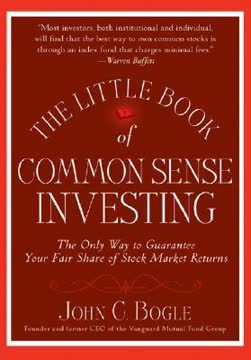


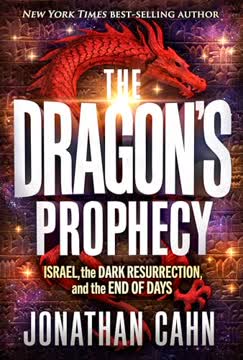
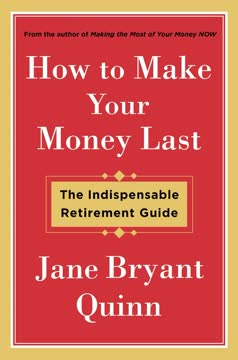
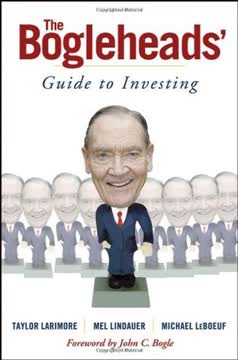
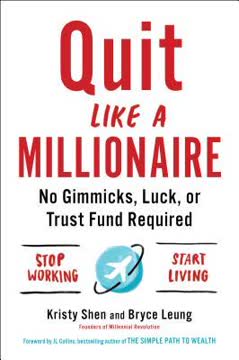

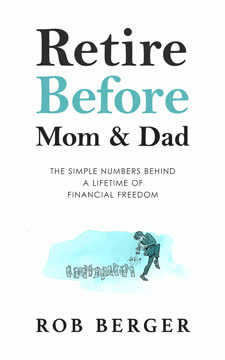
Download PDF
Download EPUB
.epub digital book format is ideal for reading ebooks on phones, tablets, and e-readers.





